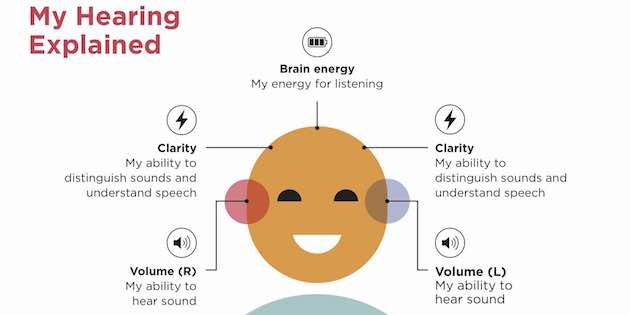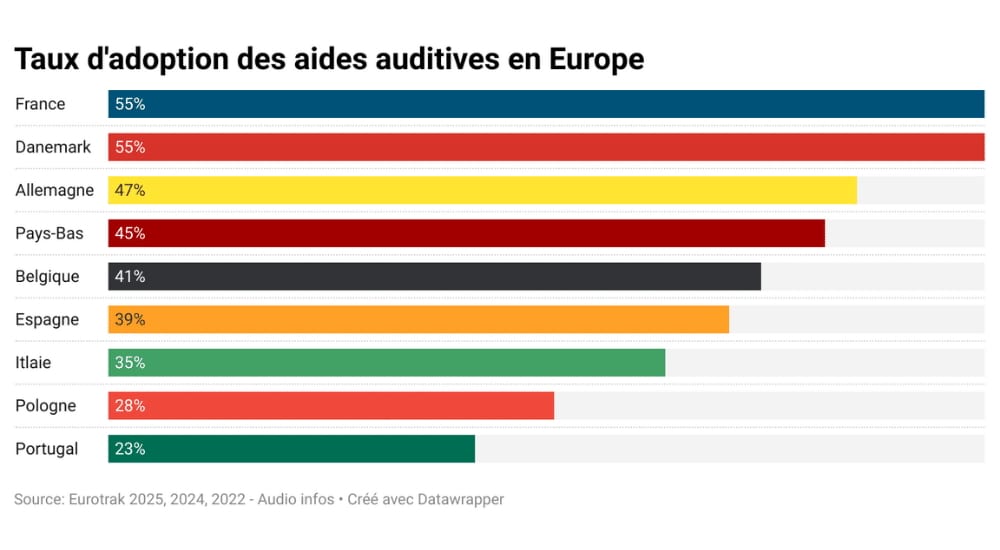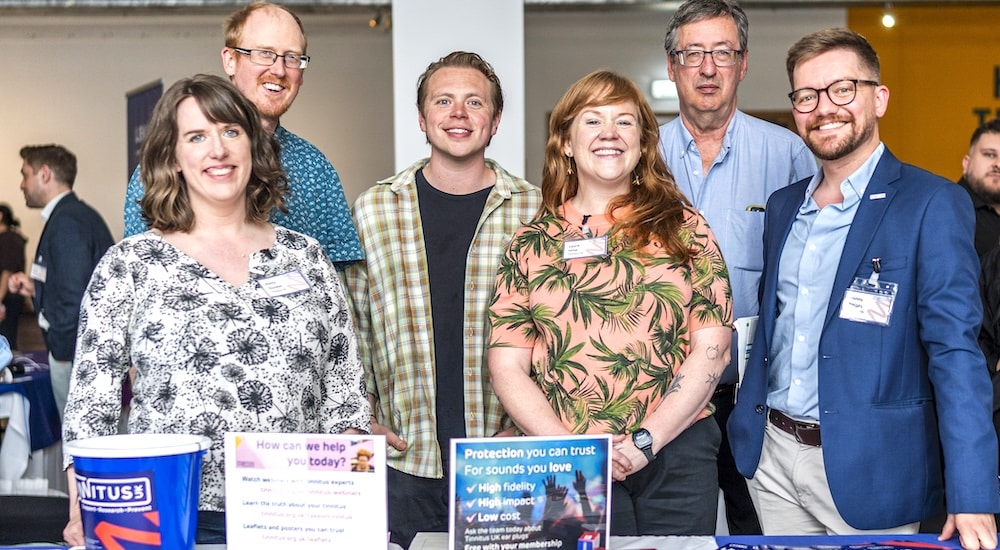How Ida Institute approaches hone person-centred care work...even online and in pandemics
hearing care
For the Denmark-based guardians of person-centred care in audiology, COVID-19 lockdowns have been just as testing as for any organisation trying to fit the old world to the new. The head of the Ida Institute explains how adapting might even sharpen the skills of rapport.

The world was a very different place just days before the virtual how-do-you-dos convened this person-centred interview with Lise Lotte Bundesen. Just how inappropriate was being at different ends of a near-global lockdown for discussing a philosophy of care based on maximising the bringing together of people in the fullest sense of words such as “rapport”, “empathy”, and “respect”?! This notwithstanding, what would never have been a key question for the founder and Managing Director of an institute set up to promote person-centred care (PCC) still had to be asked: Will the unexpected challenges of a virus threat that makes people afraid of human contact now shake-up and undermine the approaches at the core of Ida’s efforts?
˝If you had asked me before this whole virus hit us, I would have very confidently said that person-centred care is definitely on the up, because it is everywhere and the focus on it has increased enormously. I still think that will be the case but I am sure there will be some changes as a result of this virus. A lot more will be going online.”
˝It actually makes me feel good that we have been able to move on with our project the way we always have been, and not had to put a halt to it.˝
The agility of Lise Lotte’s response is unsurprising. Since starting Ida in 2007, the Institute’s knowledge base, across a “fairly flat” structure that today comprises 12 team members, has been fed by the findings of contracted and commissioned educationalists, historians, sociologists, hearing experts, and anthropologists, “a great mix of different backgrounds, and this is exactly what I wanted,” she says.
From the start, anthropological perspectives have been at the forefront of the methods Ida has been using. ˝When we started doing it in 2007 I had two anthropologists and it was definitely novel. One very influential thing we started doing was making ethnographic videos. That meant that our anthropologists travelled around to clinics in different places, sat there watching and filming, and then cut these videos that have been on our website. In the beginning we called them our mirrors. It was a way of documenting what went on, and for professionals to see what the critical situations were and where the difficult questions lie, and whether they listen enough.˝
Silver-lined relevance in the current crisis
If hearing care shifts, as expected, to a much more online scheme, it will not mean PCC losing importance. “On the contrary,” says Lise Lotte. “It is going to be really important to be able to establish some kind of rapport online as well. We all have to learn more about how to establish that rapport when not sitting in the same room. Recent studies show that is perfectly doable to make this work online.”
And she is right. None of the six key elements of PCC—empathy, active listening, open-ended questions and reflective conversations, involving family and friends, shared decision making, and understanding needs and preferences—actually require professional and patient to be in the same physical space. They can all be applied in different ways and across virtual spaces. And Lise Lotte is quick to see the advantages that online work could bring the PCC-minded professional, among them fewer cancellations for reasons such as bad weather or illness, and greater concentration in front of screens, particularly in the case of children, whose superglued attention to screens is known to every hand-wringing parent who cannot pull them away from devices.
“It is difficult to gauge at this point how much PCC loses if it is not delivered in person, but studies show that online concentration works well. How to talk to people online could be a key role for Ida. All of us are learning during this crisis about how to actually make things work online,” reasons Lise Lotte.
“Of course, you could also say that there are still a number of older adults who are not as friendly with screens as others, so it will be more of a challenge. But when those now at 65-plus become the real older belt they will be much more tech-friendly and capable of doing it. Six years ago people were scared of online, but things have moved quickly.”
The challenge of technology
For this leader, the fallout from coronavirus is by no means the first challenge Ida has faced. Indeed, the premises upon which the Institute was founded were a response to a phenomenon and perceived difficulty for patient-HCP relationships as the digital hearing aid became the norm: the machine revolution and ˝a trend towards thinking that technology is so good that it will now solve all problems˝.
˝Then it turned out that this wasn’t happening. That’s when we started looking at what more is needed to make people happy about seeking help for their hearing and what understanding is required to help professionals handle that,˝explained the specialist.
˝I’m sure you will not find anybody who will say they are not getting person-centred care, but the truth is that technology has been taking over for a long while. Our first mission was to foster that understanding of the human dynamics of person-centred care.˝
PCC has spread and been written into the mission statements of countless health organisations, both in audiology and beyond. But, easier said than done, ˝it has been implemented everywhere in the statements but when they looked at how to implement it in the clinical context it was a bit more difficult, points out Lise Lotte Bundesen.
˝I think that with all the changes that are happening in the field of audiology these days—technological changes, but also with patients moving from being patients to being consumers—there are different kinds of demands out there. The demand to be seen and heard in a different way is creating this move away from a medical model towards a consumer-oriented model.˝
Keep it simple
To help professionals manage this shift, Ida has constantly added well-researched tools to its website kit. Indeed, it was about to launch a new feature—My Hearing Explained—at this year’s American Academy of Audiology annual conference, but that gathering also fell victim to the wave of cancellations this viral spring has sprung. The tool is out there nevertheless, and it is based on a cornerstone of PCC thinking in audiology, which should kick in when the patient is trying to figure out whether to get that hearing aid or not. My Hearing Explained is a take-home supplement or conversation guide to the audiogram, bringing simplicity of communication to basics such as level of volume, clarity, and the saving of brain energy.
˝It may also be difficult for patients to explain to their communicating partners and spouses at home, and when you don’t understand it and you can’t explain why it is important to you to get this help, then it can be difficult to make your family members see why a certain investment needs to be made to get hearing aids. It’s very important! stressed Lise Lotte.
˝This (My Hearing Explained) makes it easier for a hearing care professional to communicate what a person’s hearing is, and very simply. I’ve had one professional say to me that this made her feel that she was now certain that she was communicating in a person-centred way, and could be understood,˝ she adds.
Making all tools free—and this means for everyone—is fundamental to the open-thinking ethos Lise Lotte Bundesen has strived to foment through Ida’s work. The fact that the Institute was initially set up through a grant from the Demant Foundation (Then William Demant Foundation), and that continued funding means reporting back and applying to Demant (the parent group of hearing aid producer Oticon) does not, says its founder, make what Ida offers exclusive to one company. ˝We know that several of the big manufacturers are using our materials; this is free and open to all. We have strategic partnerships with Demant, but that doesn’t mean that other manufacturers can’t use our tools.˝
International reach
Ida has developed partnerships across the globe, with a flurry of such team-ups taking place in recent years. Since November 2017, it has formalised partnerships with the Hearing Loss Association of America, the University of São Paulo, Brazil, and more recently with buyer’s guides in the US and Canada.
˝We would be very interested in being in more buyer’s guides,˝ underlines Ida Managing Director Lise Lotte Bundesen, who points out that Ida’s target has shifted in the last two years to beyond the professional and to audiology’s patients and customers. The credibility of professionals can rise in their own and in patients’ estimates through another Ida tool, a benchmark of quality that demonstrates practitioners’ dedication to high-quality person-centered care: the Inspired by IDA label. Clinicians complete two online courses in person-centered methods and sign a code of ethics to become ˝Inspired˝.
˝If a clinic is inspired by Ida and by the Inspired by Ida label, then it will also be possible for the consumers to actually find the clinics that have gone that extra mile to specialise in person-centred care,˝she says. Efforts in the last couple of years on how to talk to the public has meant bringing patients into Seminars in efforts to discover patient needs.
Bonds have always been strong with the UK. Renowned audiologist Melanie Gregory was with Ida before recently taking a role with the UK’s Hearing Care Partnership, and Adrian Davis joined Ida’s advisory board in 2008 when he was Director of the MRC Hearing and Communications Group, University of Manchester. Early in 2018, Ida announced agreements with the British Society of Audiology (BSA), and with Aston University in Birmingham.
˝We have been working a lot with the UK from the beginning, and English is our main working language. We have made many of our ethnographic videos in the UK, and we have 6 recent ones all made there,˝ said Ida’s MD.
Through its partnership with the British Academy of Audiology, Ida has strong and numerous contact with the NHS, whose people are instrumental in developing Ida tools.
Over the counter hearing aids
With the US Food and Drug Administration committed to providing regulation—at some date in this coronavirus-tumbled year—for the over-the-counter (OTC) sale of hearing aids, is there not a danger that PCC will be one of the niceties users are prepared to sacrifice to have devices at knock-down prices? According to Lise Lotte, OTC gives professionals an even greater reason to embrace PCC: For practitioners, there will also be a need to differentiate yourself and I think that the value add for HCPs these days is that they can really focus on their clients or consumers (or whatever words they use for them).
˝Person-centred care is a way you can easily implement into your practice and several studies have now shown that it does not take more time to do this, she stresses in the spirit of one of the Institute’s prime heuristic techniques: mythbusting.
There seems little doubt that anyone buying a hearing aid from a big-box retail centre such as Walmart will miss out on plenty by taking just a device and a set of instructions or an online link out of the packaging. PCC is certainly not included. It must amount to something to have a professional encouraged to focus on what each customer or patient is like, to understand the ˝whole person˝. It requires time and effort. ˝You don’t get an immediate picture of a person who walks into a clinic,˝ Lise Lotte affirms. Underlining the reach of PCC thinking, she reads one of Ida’s careful definitions: Person-centered care (PCC) ensures that people are equal and active partners in the management of their hearing difficulties. Designed around the individual, PCC focuses on and is respectful of people’s needs and preferences, involves family and other communication partners, and includes shared decision-making and goal-setting.
Originally published in Audio Infos UK 135, May 2020




